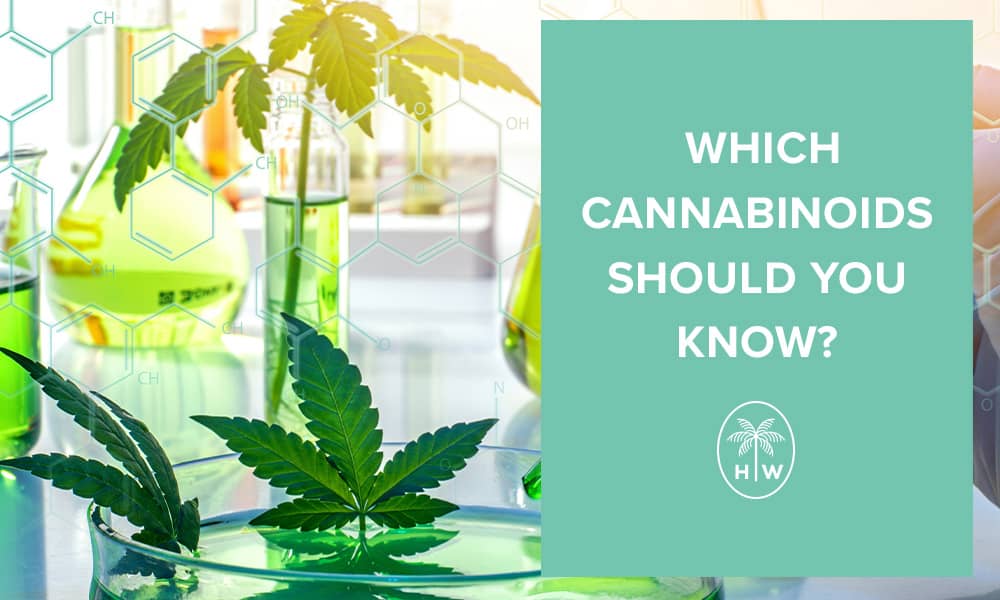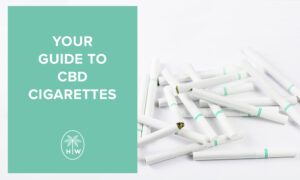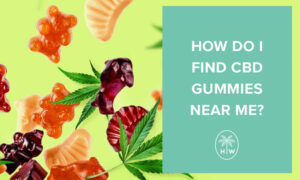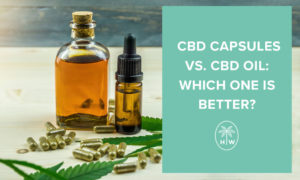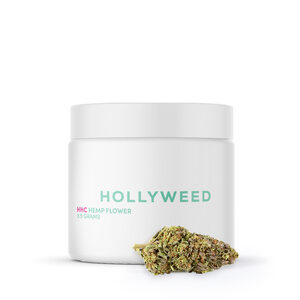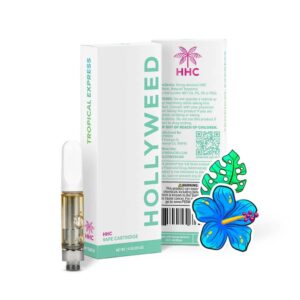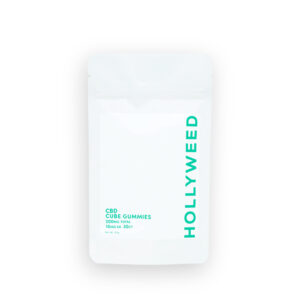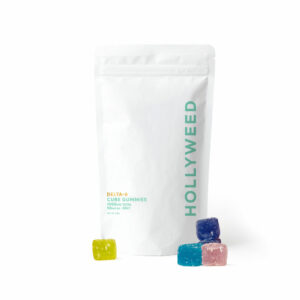Cannabinoids are the special compounds found in cannabis plants. They give marijuana and hemp their extraordinary, helpful benefits. Most people are familiar with the two most common cannabinoids: THC and CBD. But there’s an entire list of cannabinoids. Each cannabinoids has different chemical structures, benefits, and effects.
The lengthy list of cannabinoids continues to grow as we make more discoveries about cannabis. As a result, many of these unknown cannabinoids may surprise you with their effects and strength. Check out the complete list of cannabinoids and some of the incredible benefits they provide!
Table of Contents
What is a Cannabinoid?
Cannabinoids are unique, naturally occurring compounds. They are in both our bodies and cannabis plants. There are three main types of cannabinoids — phytocannabinoids, endocannabinoids, and synthetic cannabinoids.
Endocannabinoids
Endocannabinoids make up our endocannabinoid system (ECS), which plays a prominent role in our survival. All animals naturally produce endocannabinoids to keep their bodies functioning properly. The ECS performs many tasks. It regulates systems like sleep, mood, metabolism, appetite, and immune response.
Phytocannabinoids
Phytocannabinoids, the focus of this article, are compounds derived from cannabis plants. These plant-derived cannabinoids can trigger responses in our bodies. They can even help us in many ways that endocannabinoids alone cannot. In a sense, phytocannabinoids are the perfect complement to endocannabinoids. This is because they work together to reach a higher level of wellness.
You probably already know the two most famous phytocannabinoids found in the cannabis plant. They are tetrahydrocannabinol (THC) and cannabidiol (CBD). The receptors in our body carry the cannabinoids to the ECS to help us regulate certain functions like:
- Relieving discomfort
- Improving sleep
- Promoting natural energy
- Boosting appetite and digestion
By keeping our bodies in tune, cannabinoids like CBD can support the ECS and help us reach homeostasis (inner balance). Part of why CBD products have become so popular recently is that they offer an all-natural and organic way to ease tension and center the mind.
Synthetic cannabinoids
Synthetic cannabinoids are artificial compounds. They are in products ranging from incense to herbal medicines. These fake cannabinoids are unsafe and may have significant health risks if consumed. Many federal governments around the world have banned the use of synthetic cannabinoids.
Try to avoid buying synthetic products if you aren’t sure where the ingredients are from. There are no regulations on the safety of synthetic cannabinoids, and many are illegal. It can be hard to know how your body will react to them, and there are already plenty of natural, safe phytocannabinoids.
Synthetic cannabinoids may cause severe health issues with symptoms like:
- Hallucinations
- Heart attack
- Kidney failure
- Muscle damage
- Seizures
- Stroke
As long as you are careful where you buy your cannabis products, you won’t need to worry about any potential (and, in some cases, fatal) risks. Follow reputable brands with plenty of customer reviews. Reading testimonials can ensure that you are getting the right product to suit your every need!
How Many Cannabinoids Exist In Cannabis?
Generally, the accepted number for how many cannabinoids exist in cannabis is about 113. But research is ongoing, so that number can fluctuate between 60-150, depending on your information source. As more detailed research on cannabis comes out, we may discover even more cannabinoids!
Part of why it’s so hard to agree on the exact number of cannabinoids is that many exist in minimal quantities (less than 1%). Each hemp plant (and each strain) has varying amounts of each cannabinoid. The variations make it challenging to lock down a single number that applies to all cannabis plants.
For example, in 2019, an Italian team of scientists discovered two brand new cannabinoids. They are tetrahydrocannabiphorol (THCP) and cannabidiphorol (CBDP). The team found that these two rare cannabinoids were 33 times more reactive than THC and CBD! Although we need more research to determine if we can safely use these cannabinoids, the study opened many potential doors for the future.
The Complete List of Cannabinoids in Cannabis
As we mentioned, a complete list of cannabinoids can vary from source to source. Our list of tested and researched cannabinoids have impressive benefits and effects.
Cannabidiols:
- Cannabidiol (CBD)
- Cannabidiolic acid (CBDA)
- Cannabidiorcol (CBD-C1)
- Cannabidiol monomethylether (CBDM)
- Cannabidivarin (CBDV)
- Cannabidivarinic acid (CBDVA)
Cannabichromenes:
- Cannabichromene (CBC)
- Cannabichromenic acid (CBCA)
- Cannabichromevarin (CBCV)
- Cannabichromevarinic acid (CBCVA)
Cannabicyclols:
- Cannabicyclol (CBL)
- Cannabicyclolic acid (CBLA)
- Cannabicyclovarin (CBLV)
Cannabielsoins:
- Cannabielsoin (CBE)
- Cannabielsoin acid A (CBEA-A)
- Cannabielsoic acid B (CBEA-B)
Cannabigerols:
- Cannabigerol (CBG)
- Cannabigerolic acid (CBGA)
- Cannabigerolic acid monomethylether (CBGAM)
- Cannabigerol monomethylether (CBGM)
- Cannabigerovarin (CBGV)
- Cannabigerovarinic acid (CBGVA)
Cannabinols & cannabinodiols:
- Cannabinol (CBN)
- Cannabinolic acid (CBNA)
- Cannabiorcool (CBN-C1)
- Cannabinol-C2 (CBN-C2)
- Cannabinol-C4 (CBN-C4)
- Cannabinodiol (CBND)
- Cannabinol methylether (CBNM)
- Cannabivarin (CBV)
- Cannabinodivarin (CBVD)
Cannabitriols:
- Cannabitriol (CBT)
- Cannabitriolvarin (CBTV)
- 8,9-Dihydroxy-delta-6a-tetrahydrocannabinol
- 10-Ethoxy-9-hydroxy-delta-6a-tetrahydrocannabinol
Delta-9-tetrahydrocannabinols:
- Delta-9-tetrahydrocannabinol (THC)
- Delta-9-tetrahydrocannabiorcol (THC-C1)
- Delta-9-tetrahydrocannabinol-C4 (THC-C4)
- Delta-9-tetrahydrocannabinolic acid A (THCA-A)
- Delta-9-tetrahydrocannabinolic acid B (THCA-B)
- Delta-9-tetrahydrocannabiorcolic acid (THCA-C1)
- Delta-9-tetrahydrocannabinolic acid-C4 (THCA-C4)
- Delta-9-tetrahydrocannabivarin (THCV)
- Delta-9-tetrahydrocannabivarinic acid (THCVA)
Delta-8-tetrahydrocannabinols:
- Delta-8-tetrahydrocannabinol (Δ8-THC)
- Delta-8-tetrahydrocannabinolic acid (Δ8-THCA)
Other cannabinoids (no classification):
- Cannabiglendol
- Cannabichromanon (CBCF)
- Cannabifuran (CBF)
- Cannabiripsol (CBR)
- Cannbicitran (CBT)
- Dehydrocannabifuran (DCBF)
- Delta-9-cis-tetrahydrocannabinol (cis-THC)
- Tryhydroxy-delta-9-tetrahydrocannabinol (triOH-THC)
- 10-Oxo-delta-6a-tetrahydrocannabinol (OTHC)
What Are the Most Popular Cannabinoids?
In the medical world, there are the “Big Six” of cannabinoids — THC, CBD, CBG, CBN, CBC, and THCv. Experts have studied these six cannabinoids the most for their potential medical applications. Let’s find out what the studies say about these popular cannabinoids and which others are just as important!
THC (Delta-9-tetrahydrocannabinol)
THC is perhaps the most well-known cannabinoid of them all. You can find large amounts of THC in marijuana. THC has powerful, euphoric effects that give the feeling of being “high” or intoxicated.
The effects of THC are well-documented and popular with many people looking to wind down and relax after a long day. THC can bind to receptors in our brain and release dopamine (the pleasure hormone) into our systems. Beyond the high lies many other benefits, such as improving sleep or relieving the discomfort that puts THC at the top of this list.
CBD (Cannabidiol)
In some ways, CBD and THC are similar in that they can provide relaxed feelings. But this is where the similarities end because CBD is a non-psychoactive compound that does not leave you with the adverse effects that THC can promote (foggy mind, grogginess, “couch lock,” paranoia, etc.).
Many people have started to use and even prefer CBD because the lack of euphoric feelings means fewer side effects. You can use CBD products at any time of the day without worrying about your ability to function or think clearly. You also won’t experience CBD withdrawal or addiction.
While THC and marijuana are still illegal federally, the 2018 Farm Bill made CBD and hemp-derived products legal. As long as the CBD product does not contain over 0.3% THC, it is entirely legal to use!
CBG (Cannabigerol)
CBG is often considered the mother of all cannabinoids, despite making up less than 1% of the cannabinoid profile in cannabis plants. The acidic form of CBG, CBG-A, breaks down into THC and CBD when heated during the extraction process. Fully mature cannabis plants also contain minimal amounts of CBG because it has already developed into THC and CBD.
CBG is a lot like CBD; both are non-psychoactive with many of the same benefits. But research suggests that CBG may be more effective than CBD in certain areas. CBG naturally occurs in trace amounts in hemp plants. Though, strains like White CBG are grown specifically for high cannabigerol content. Since CBG is much rarer and harder to extract, its products are often more expensive, but the effects speak for themselves!
CBN (Cannabinol)
When CBN is present, it’s often a sign of stale or old cannabis. While some people may toss the old cannabis for a fresher, newer batch, you should know that CBN actually has a few surprising benefits.
CBN is a mildly psychoactive cannabinoid, but it can produce sedative effects when paired with THC or CBD. Manufacturers have started to manually age their cannabis plants to get CBN, much like a finely-aged wine or dry-aged steak. Many people buy CBN products to relax and even help themselves sleep better.
CBC (Cannabichromene)
CBC is one of the lesser-known cannabinoids in the Big Six, but it has many promising benefits. It has non-psychoactive effects that may combat swelling. CBC might also mitigate the development of microorganisms. But CBC is most often found supporting other cannabinoids.
CBC exists in tiny amounts in cannabis but has more potency and effectiveness than the primary cannabinoids. Experts are currently studying CBC for its ability to stimulate anandamide. Anandamide is the chemical in our brain that suppresses pain.
THCv (Tetrahydrocannabivarin)
Rounding out the Big Six is THCv. This is a mildly psychoactive cannabinoid that can provide energizing and uplifting effects. Cannabis flower strains with high levels of THCv can give a quick but powerful jumpstart to the day.
THCv worked as an appetite suppressant in early studies. Contrary to THC, which may stimulate your appetite, THCv has the potential to play a part in many weight-loss programs. Strains that may have high THCv concentrations are:
- Tangie
- Cookies (Girl Scout Cookies)
- Cherry Pie
- Durban Poison
- Pineapple Purps
- Jack the Ripper
THCa (Tetrahydrocannabinolic Acid)
Before we get THC, we have THCa. THCa is a non-psychoactive cannabinoid that is most abundant in raw, unprocessed cannabis plants. Once farmers harvest a marijuana plant, its THCa starts to convert to THC. This process also begins when you heat marijuana.
To extract and make use of THCa, many foods or supplements will “juice” fresh cannabis plants and add the extract to their foods or drinks. This provides a non-intoxicating health boost that can help you tackle the day. Many people consider fresh or raw cannabis to be a superfood since it contains high levels of:
- Protein
- Fiber
- Vitamins
- Minerals
- Antioxidants
CBDa (Cannabidiolic Acid)
Much like THCa is the precursor to THC, CBDa comes before CBD. When someone harvests/ignites cannabis, CBDa turns to CBD. High concentrations of CBDa are in raw or unprocessed hemp plants. These can be more challenging to extract. But you can still find CBDa oil at select cannabis stores or online to try!
Studies show that isolated CBDa may prove to have far greater effectiveness and potency than CBD. CBDa showed an impressive ability to relieve discomfort and treat feelings of anxiousness. CBDa also has more bioavailability when compared to CBD, with your body being able to metabolize and process it more efficiently.
Other Elements in Cannabis
As amazing cannabinoids are, other elements of cannabis also contribute to the effects, flavors, and aromas of the entire plant.
- Terpenes: Terpenes are the compounds that provide the scent and flavors for the cannabis strains. As with cannabinoids, there are over 100 different terpenes in hemp. Each terpene has unique scents and effects. Some terpenes may have spicy and peppery tastes to give us a much-needed boost, while others may be smooth and earthy to help us relax.
- Flavonoids: Flavonoids are compounds that give plants their bright, flashy colors. But flavonoids are also nutrient-rich with high levels of antioxidants that can benefit our health. All fruits and vegetables contain some level of flavonoids as well.
Final Thoughts – List of Cannabinoids
There are over 100 cannabinoids in existence. We’re quickly learning about the many beneficial effects that they can have on our bodies. We naturally produce cannabinoids in our bodies and can use cannabinoids from cannabis to enhance our wellness. As we continue to discover more cannabinoids, we learn even more wonderful ways they can affect our lives. Keep an eye out for an even longer list of cannabinoids in the future!
